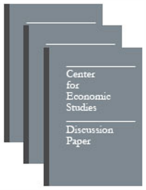
An official website of the United States government
Here’s how you know
Official websites use .gov
A .gov website belongs to an official government organization in the United States.
Secure .gov websites use HTTPS
A lock (
) or https:// means you’ve safely connected to the .gov website. Share sensitive information only on official, secure websites.
-
//
- Census.gov /
- Library /
- Census Working Papers /
- Earnings Inequality and Coordination Costs: Evidence from U.S. Law Firms
Earnings Inequality and Coordination Costs: Evidence from U.S. Law Firms
Earnings Inequality and Coordination Costs: Evidence from U.S. Law Firms
Abstract
Earnings inequality has increased substantially since the 1970s. Using evidence from confidential Census data on U.S. law offices on lawyers’ organization and earnings, we study the extent to which the mechanism suggested by Lucas (1978) and Rosen (1982), a scale of operations effect linking spans of control and earnings inequality, is responsible for increases in inequality. We first show that earnings inequality among lawyers increased substantially between 1977 and 1992, and that the distribution of partner-associate ratios across offices changed in ways consistent with the hypothesis that coordination costs fell during this period. We then propose a “hierarchical production function” in which output is the product of skill and time and estimate its parameters, applying insights from the equilibrium assignment literature. We find that coordination costs fell broadly and steadily during this period, so that hiring one’s first associate leveraged a partner’s skill by about 30% more in 1992 than 1977. We find also that changes in lawyers’ hierarchical organization account for about 2/3 of the increase in earnings inequality among lawyers in the upper tail, but a much smaller share of the increase in inequality between lawyers in the upper tail and other lawyers. These findings indicate that new organizational efficiencies potentially explain increases in inequality, especially among individuals toward the top of the earnings distribution.
Others in Series
Working Paper
Working Paper
Working Paper
Share
Related Information
Some content on this site is available in several different electronic formats. Some of the files may require a plug-in or additional software to view.
 Yes
Yes
 No
NoComments or suggestions?


Top

